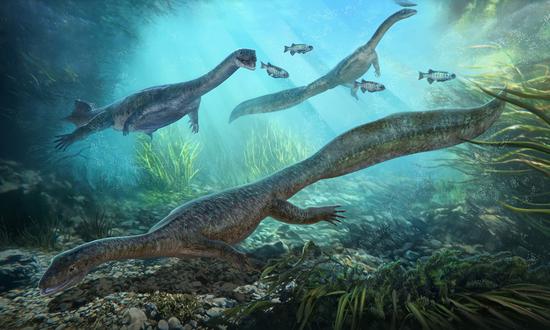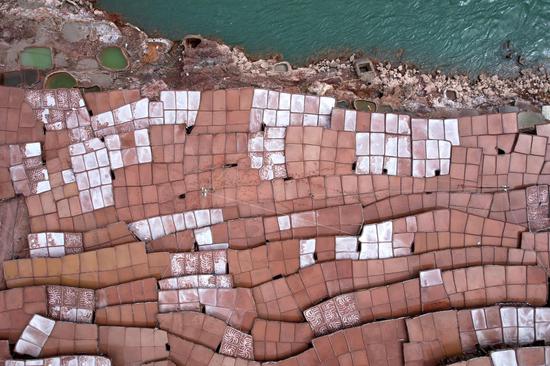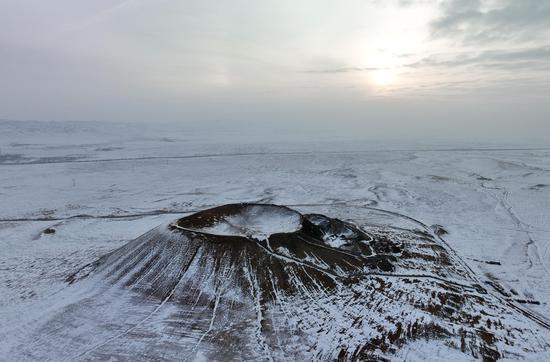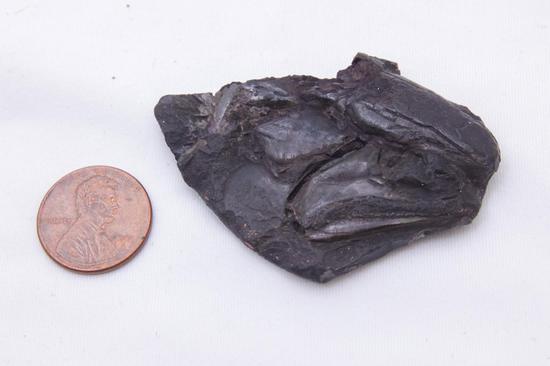
A restoration map of Hyphalosaurus lingyuanensis (Photo/Courtesy of Xing Lida)
Scientists from China and abroad announced on Tuesday the discovery of a very rare fossil of a freshwater aquatic reptile. The fossil was found in the stratum of the Early Cretaceous period in Northeast China's Liaoning Province.
The reptile of the species Hyphalosaurus, also known as Sinohydrosaurus, meaning "submerged lizard," used to live in a large quantity in the fresh water in the western part of Liaoning during the Early Cretaceous period.
The reptiles with a small flattened skull and a long neck belonged taxonomically to the extinct order of Choristodera. It was a semiaquatic diapsid reptile which lived in Asia, Europe and North America about 170 million years ago.
Since the 1980s, a large number of Choristodera fossils have been discovered in successions within the territory of the country. The earliest fossils of Hyphalosaurus lingyuanensis on record came from the Early Cretaceous Yixian Formation in Lingyuan city, Liaoning.
Yixian Formation is the volcanic sedimentary rock that preserves a large number of fossils of the Jehol Biota, the organisms that lived in Early Cretaceous volcanic-influenced environments, including northeastern China.
The genus Hyphalosaurus contains two species, H. lingyuanensis and H. baitaigouensis, both from the Yixian Formation of Liaoning Province. They both got their names from where they came from. They are similar in appearance but different in the number of vertebrae.
Despite the abundance of Hyphalosaurus fossils discovered, there so far have been only two cases with skin details recorded. Both the specimens contain only partial epidermis on their trunks and tails, without providing more details.
In 2019, a research team led by Xing Lida, associate professor from China University of Geosciences in Beijing conducted a joint research on a Hyphalosaurus fossil collected by the Yingliang Stone Natural History Museum in East China's Fujian Province.
The Hyphalosaurus fossil has a length of nearly 1.1 meters, with 19 cervical vertebrae, 16 dorsal vertebrae, three sacral vertebrae and at least 56 caudal vertebrae, which belongs to the H. lingyuanensis species.
The fossil has a significant research value with the soft tissue of skin being very well preserved in the form of carbonaceous membranes (or lamination), despite that the bones were severely flattened during the fossilization process, providing more information about the appearance of this specialized aquatic reptile.
The fossil preserved in two separate matrices reveals the ventral epidermis of the individual H. lingyuanensis species, showing the diversity of scale types of the nearly entire body.
The dark skin carbonaceous membranes are distributed everywhere including the specimen's head, neck, shoulder, left forelimb, double hind limb, torso and tail.
It was estimated that the exposed skin areas of the specimens exhibit five major scale shapes including rectangular, square, diamond, polygon and oval shapes.
Besides, traces of skin carbonaceous membranes extending to the base of the middle phalanx provide strong new evidence that the H. lingyuanensis species had webbed feet.
Moreover, compared with that of the neck and body, the skin area on the tail of the specimen is much wider, sort of like the tail of fish, which the research team inferred that the H. lingyuanensis used its tail to propel itself forward in the water.
Generally speaking, the Yingliang specimen of H. lingyuanensis reveals a much more diversified scale pattern than before, which reinforced our understanding of this species of animal and greatly increased the knowledge of the diversity of currently known skin patterns of ancient aquatic reptiles.
The research paper has been published in Cretaceous Research, the international scientific journal on palaeontology.


















































 京公网安备 11010202009201号
京公网安备 11010202009201号